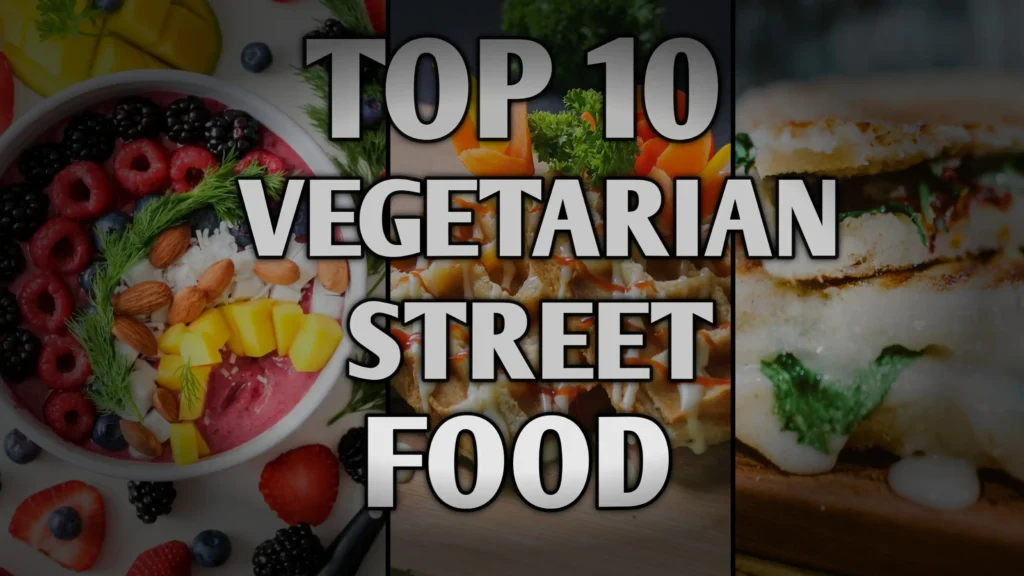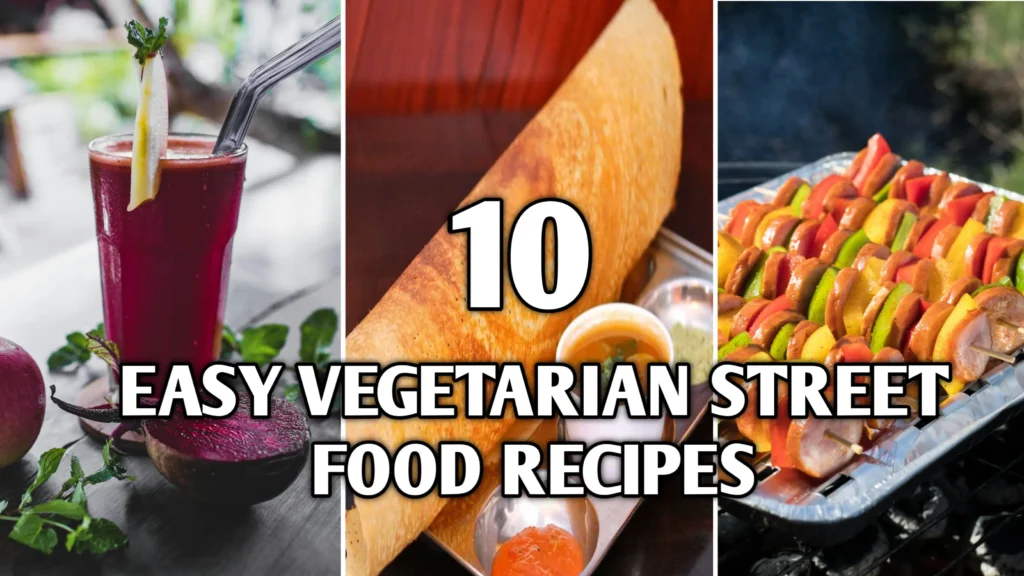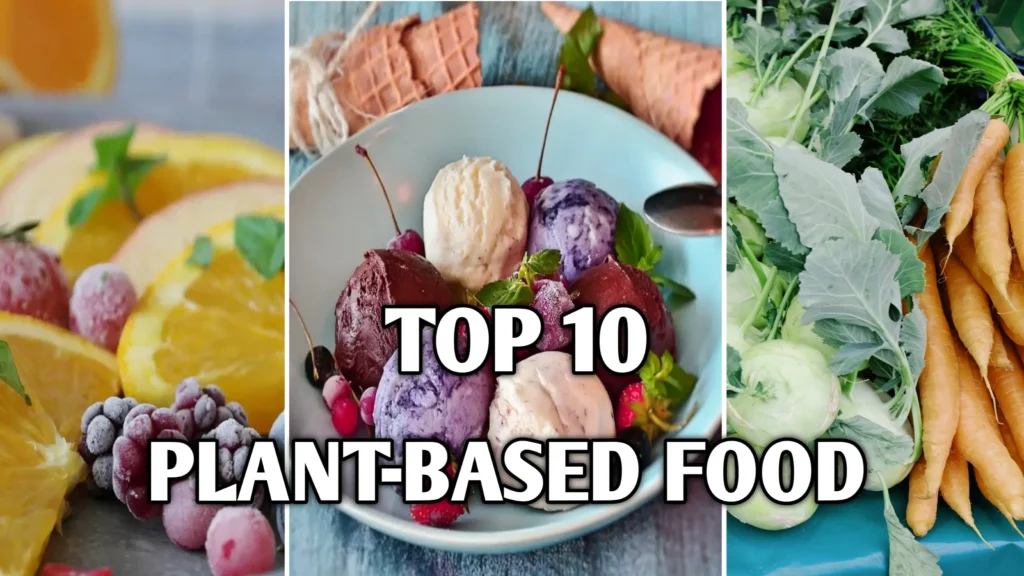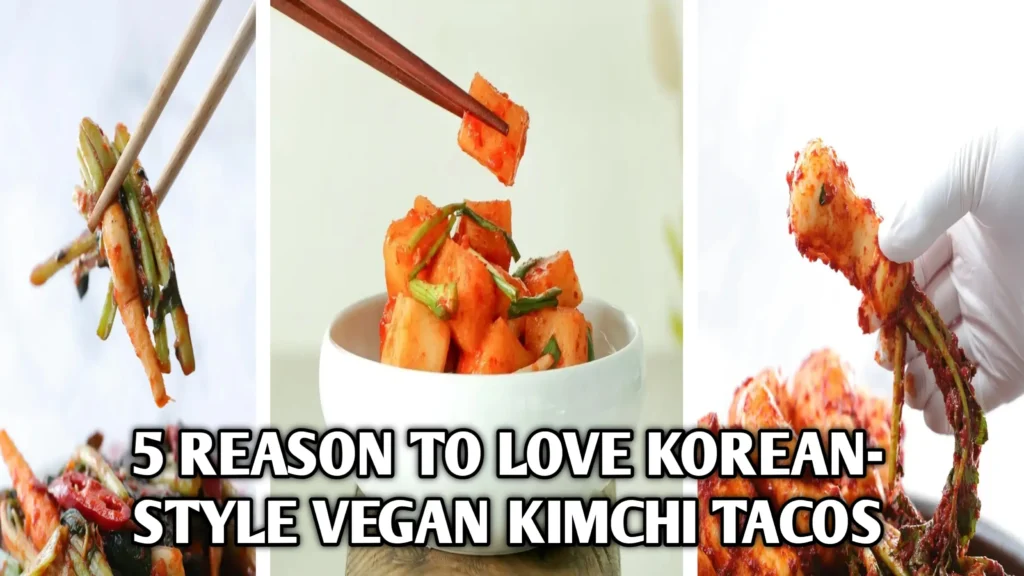
Introduction:
Imagine the vibrant streets of Seoul, where sizzling aromas waft from food stalls, blending seamlessly with the lively energy of a bustling taqueria in Mexico City. This is the essence of Korean-style vegan kimchi tacos—a culinary fusion that marries the bold, spicy flavors of Korean cuisine with the comforting, handheld delight of Mexican tacos. For those seeking a plant-based adventure, these tacos offer a delightful journey that satisfies both the palate and the soul.
1. A Flavor Symphony: The Bold Taste of Vegan Kimchi Tacos
At the heart of these tacos lies the star ingredient: vegan kimchi. Traditional kimchi often contains fish sauce or shrimp paste, but vegan versions replace these with umami-rich alternatives like tamari or miso, ensuring a fully vegetarian experience. The result is a tangy, spicy, and slightly sour condiment that adds depth and complexity to every bite.
Complementing the kimchi is crispy tofu, marinated in a blend of gochujang (Korean red chili paste), garlic, ginger, and soy sauce. This combination infuses the tofu with a savory heat that pairs perfectly with the cool crunch of pickled vegetables and the creamy richness of a vegan gochujang mayo. (korean vegan recipes) Nestled within a warm corn tortilla, each component harmonizes to create a taco that’s both comforting and exhilarating.
2. Nutritional Powerhouse: Health Benefits in Every Bite
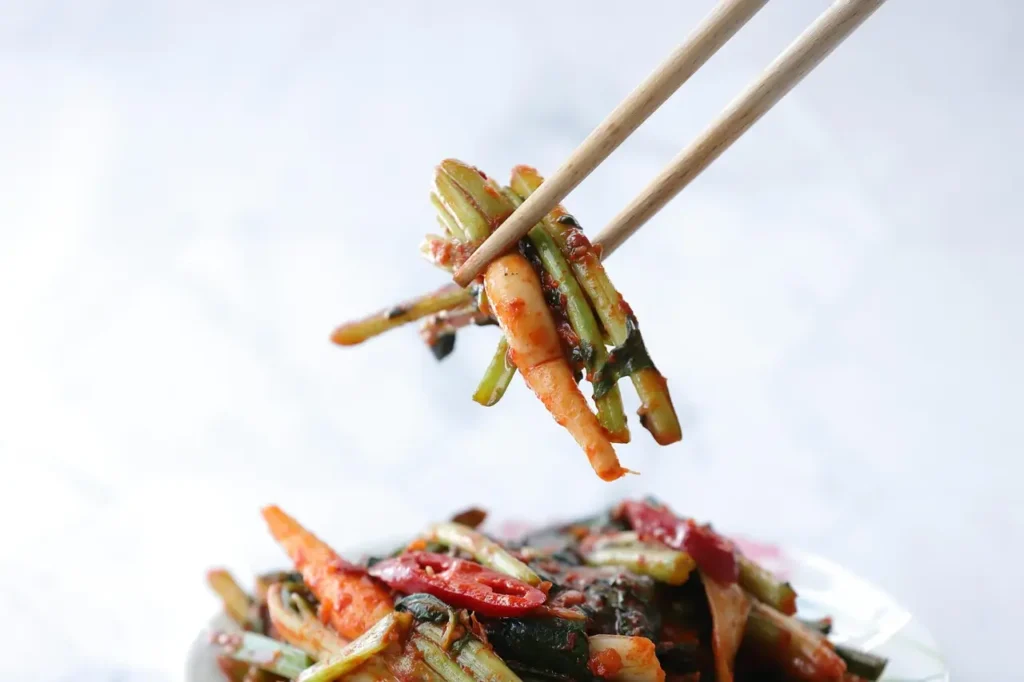
Beyond their tantalizing taste, vegan kimchi tacos are a nutritional powerhouse. Kimchi is renowned for its probiotic content, promoting gut health and aiding digestion. Tofu provides a high-quality plant-based protein, essential for muscle repair and overall wellness. The inclusion of fresh vegetables adds fiber, vitamins and minerals, contributing to a balanced and wholesome meal.
Moreover, by opting for a fully vegetarian version, these tacos eliminate cholesterol and reduce saturated fat intake, aligning with heart-healthy dietary choices. The use of aquafaba—a versatile egg substitute derived from chickpea brine—in sauces and dressings further enhances the nutritional profile, offering a low-calorie, high-protein alternative that supports various dietary needs.
3. Culinary Creativity: A Canvas for Flavor Exploration
One of the most exciting aspects of Korean-style vegan kimchi tacos is their adaptability. They serve as a canvas for culinary creativity, allowing home cooks and chefs alike to experiment with flavors and textures. Consider incorporating grilled mushrooms for an earthy depth, or adding sliced avocado for a creamy contrast. For a touch of sweetness, a drizzle of maple syrup-infused gochujang sauce can elevate the flavor profile.
The versatility extends to the choice of tortillas—opt for gluten-free corn tortillas for a traditional touch, or try whole wheat or spinach-infused varieties for added nutrients and color. The possibilities are endless, encouraging a personalized approach to this fusion favorite.
4. Cultural Fusion: Bridging Culinary Traditions
Korean-style vegan kimchi tacos exemplify the beauty of cultural fusion, blending the rich culinary traditions of Korea and Mexico into a cohesive and delightful dish. This fusion not only introduces diners to new flavor combinations but also fosters an appreciation for diverse food cultures.
By embracing elements from both cuisines, vegan kimchi recipe these tacos celebrate the global nature of modern gastronomy, encouraging cross-cultural understanding and culinary innovation. They serve as a testament to the idea that food can be a unifying force, bringing people together through shared experiences and flavors.
🥬 Curious About Kimchi? Discover Its Origins & Benefits
Kimchi is a traditional Korean fermented vegetable dish rich in probiotics, flavor, and history. Learn how it supports digestion, boosts immunity, and adds zing to your meals.
📚 Read About Kimchi on Wikipedia5. Accessible Indulgence: Easy to Prepare and Enjoy
Despite their complex flavors, vegan kimchi tacos are surprisingly accessible to prepare at home. With readily available ingredients and straightforward cooking techniques, they offer an indulgent yet achievable culinary experience. Preparing the components—marinating and cooking the tofu, assembling the pickled vegetables, and blending the sauces—can be a fun and rewarding process.
For those new to vegan cooking, these tacos provide an excellent introduction to plant-based cuisine, showcasing how satisfying and flavorful meatless meals can be. They also korean vegan recipes offer an opportunity to explore new ingredients like aquafaba, expanding one’s culinary repertoire and confidence in the kitchen.
6.How to Make Vegan Kimchi: A 100% Vegetarian Recipe
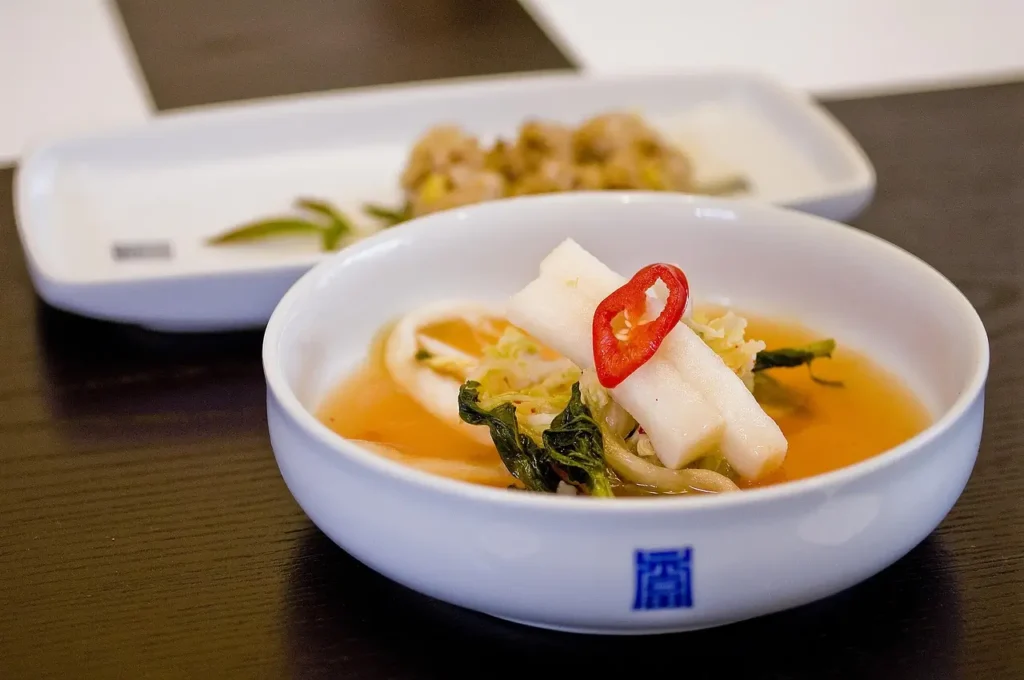
Crafting your own vegan kimchi is surprisingly straightforward and infinitely rewarding—you get to tailor the spice level, control the salt, and know exactly what goes into every crunchy bite. how to make vegan kimchi Below is a clear ingredient list followed by a step-by-step guide to vegan kimchi recipe fermenting bright, tangy, plant-based kimchi that’s perfect for loading into (how to make vegan kimchi) your vegan kimchi tacos (or enjoying straight from the jar).
Ingredients
- 1 large napa cabbage (about 2–3 lbs), cored and cut into 2″ pieces
- ½ cup coarse sea salt or kosher salt (for salting the cabbage)
- 4 cups water, filtered or distilled
- 1 small daikon radish, peeled and julienned
- 2 medium carrots, peeled and cut into matchsticks
- 4–5 scallions, trimmed and sliced on the bias (about 1 ” pieces)
- 1/4 cup Korean red chili flakes (gochugaru) (adjust for mild or fiery heat)
- 2 tablespoons freshly grated ginger
- 4 garlic cloves, minced
- 3 tablespoons miso paste (white or yellow; adds umami in place of fish sauce)
- 2 tablespoons tamari (or low-sodium soy sauce for gluten-free)
- 1 tablespoon maple syrup (or coconut sugar)
- 1 tablespoon toasted sesame oil (optional, for depth)
- 1 small jalapeño or green chili, thinly sliced (optional, for extra kick)
- Additional water (as needed to create a paste)
Step-by-Step Guide
- Salt the Cabbage:
In a large bowl, dissolve ½ cup coarse salt in 4 cups of water. Submerge the napa cabbage pieces, pressing down so they’re fully covered. Let sit 1–2 hours, tossing every 30 minutes to ensure even brining. The cabbage will wilt and soften—this is key for proper fermentation and texture. - Rinse & Drain:
Once the cabbage is pliable and reduced in volume, drain it in a colander and rinse thoroughly under cool running water to remove excess salt. Gently squeeze out any remaining liquid; set the cabbage aside. - Prepare the Vegetable Mix-In:
In a separate bowl, combine the julienned daikon, carrot matchsticks, and scallion slices. If you’re adding jalapeño or green chili, include them here. Toss gently to mix. - Make the Spice Paste:
In a medium bowl, whisk together gochugaru, grated ginger, minced garlic, miso paste, tamari, maple syrup, and sesame oil. Add just enough water (a tablespoon at a time) to form a thick, spreadable paste. Taste and adjust—add more maple syrup if you prefer a touch of sweetness, or extra chili flakes for more heat. - Massage Together:
Wearing food-safe gloves, transfer the drained cabbage to a large mixing bowl. Add the vegetable mix-in and pour over the spice paste. Massage gently but thoroughly, ensuring every piece of cabbage and vegetable is coated in the vibrant red paste. - Pack & Ferment:
Transfer the kimchi mixture into a clean glass jar (or two smaller jars), pressing down firmly to eliminate air pockets. Leave about 1″ of headspace at the top. Seal loosely (or cover with a fermentation weight and lid to allow gases to escape). - First Fermentation:
Leave the jar at room temperature (ideally 65–75°F) for 2–3 days, tasting daily after day 2. Once it reaches your preferred tang and funk, tighten the lid and move to the refrigerator. - Cold Fermentation & Storage:
vegan kimchi tacos continues to develop complexity in the fridge. It’s best after another week of cold fermentation but can be enjoyed immediately. Stored properly, it’ll keep for up to 2 months—each batch getting more sour and delicious over time.
Nutrition Facts (Per Serving)
| Nutrient | Amount |
|---|---|
| Calories | 320 kcal |
| Protein | 15 g |
| Carbohydrates | 35 g |
| Fat | 15 g |
| Fiber | 6 g |
| Sodium | 600 mg |
Quick Tips
- Ingredient Swaps: Substitute tofu with tempeh or jackfruit for a different texture and flavor profile.
- Storage: Store components separately in airtight containers; assemble tacos just before serving to maintain freshness.
- Serving Suggestions: Pair with a side of kimchi fried rice or a fresh cucumber salad for a complete meal.
- Troubleshooting: If tofu isn’t crisping as desired, ensure it’s thoroughly pressed to remove excess moisture before cooking.
- Health Hacks: Use low-sodium soy sauce and increase the proportion of fresh vegetables to enhance the nutritional value.
7.A Cross-Cultural Love Affair: Where Seoul Meets Salsa
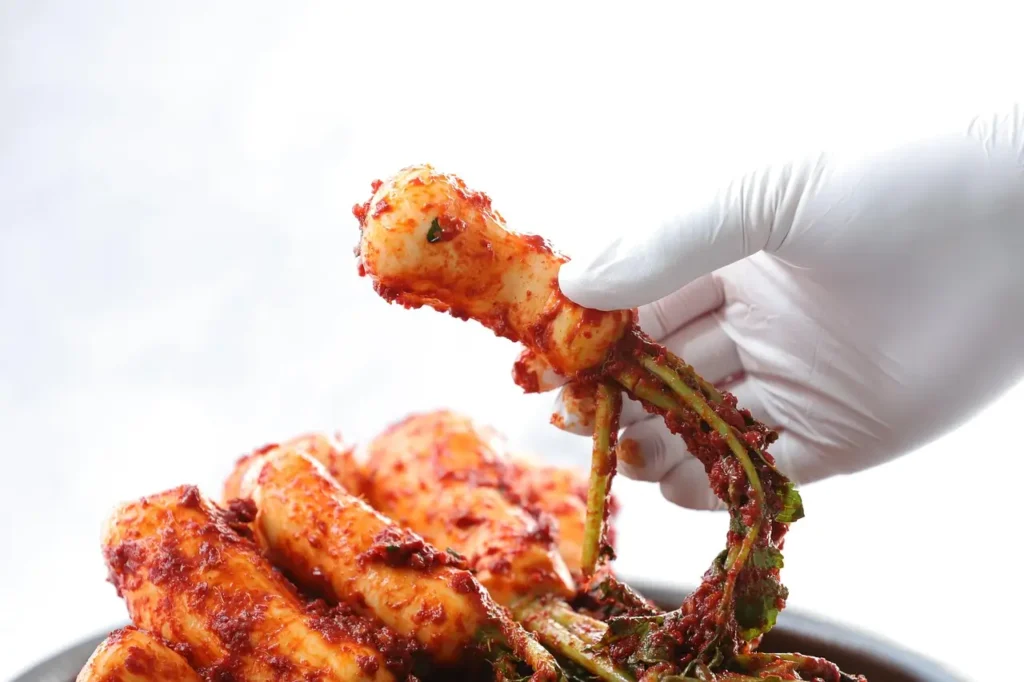
Street food tells the story of a city. From the alleys of Seoul to the mercados of Mexico City, it’s vibrant, humble, and packed with personality. But when these two street food capitals collide on a tortilla, magic happens. Korean-style vegan kimchi tacos are more than just a trendy dish—they’re a flavorful, plant-based celebration of culinary fusion. Spicy, tangy, fresh, and deeply satisfying, these tacos are quickly becoming a favorite in the global plant-based movement.
At their vegan kimchi recipe heart is kimchi—fermented, spicy napa cabbage that’s bold and unapologetic. While traditional kimchi contains fish sauce or shrimp paste, vegan versions are beautifully crafted with plant-based umami sources like soy sauce, miso, and kelp powder. This fully vegetarian adaptation delivers the same punch of flavor, making it perfect for vegans and curious omnivores alike.
But this fusion is about more than just ingredients—it’s about honoring cultures while reimagining them in exciting, inclusive ways. The heat of Korean flavors meets the handheld joy of tacos, creating a portable, messily delicious experience. Whether you’re a lifelong vegan or simply looking to add more plant-based meals to your routine, these tacos are a must-try.
🌱 Explore 5 Next‑Level Plant-Based Chaat Recipes
Dive into the world of global street food fusion with these innovative plant-based chaat recipes. From classic Pani Puri with mint-coriander aquafaba foam to Mexican-Indian Corn Elote Chaat, discover how traditional flavors meet modern vegan twists.
🍽️ Read the Full Article🔎 Also check our Food Trends section for more exciting culinary inspirations.
8.Bold Flavors, Compassionate Roots: What Makes Vegan Kimchi Tacos So Irresistible
Every bite of a vegan kimchi taco delivers layers of flavor: the fermented spice of kimchi, the deep umami of marinated tofu, the zing of quick pickles, and the creamy richness of a plant-based sauce like gochujang mayo or sesame slaw. All of this is nestled in a warm corn tortilla that brings everything together with its earthy sweetness.
This dish is a masterclass vegan taco recipes in contrast and harmony. Hot and cold. Crunchy and soft. Tangy and creamy. When crafted thoughtfully, vegan kimchi tacos can compete with—and often surpass—the complexity of meat-based street food.
What makes it even better? You can create these tacos in a 100% vegetarian way without compromising on flavor or texture. Forget eggs, dairy, seafood, or animal-based broth—every element can be made using plants, herbs, fermented vegetables, and whole-food substitutes that are kinder to your body and the planet.
Consider the marinated tofu. When pressed and pan-seared or air-fried, it becomes crispy on the outside and tender inside—an ideal base for bold seasonings like garlic, ginger, soy, sesame oil, and chili. Add in fresh scallions, julienned carrots, and a quick cucumber pickle, and you’ve got a taco filling that feels both street-smart and nutritionist-approved.
And don’t sleep on the sauces. A creamy, spicy vegan gochujang dressing (made with vegan mayo or blended cashews) takes the heat and balances it with richness. If you’re into tang, a lime-kimchi vinaigrette adds a mouthwatering brightness. Each drizzle elevates your taco from “tasty” to “I need another one right now.”
9.Plant-Based Nutrition That Packs a Punch
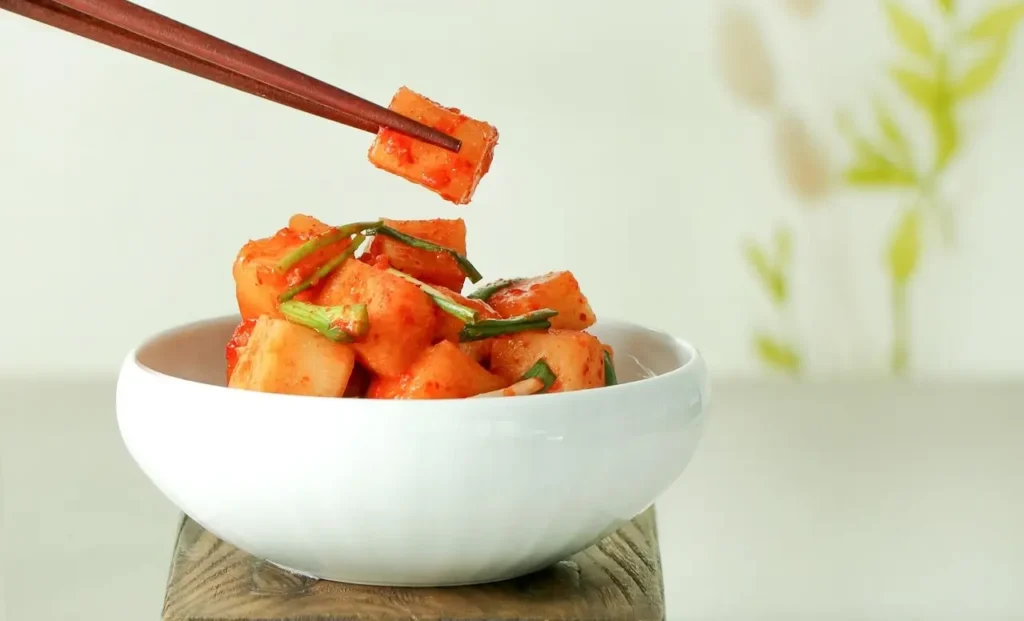
While many street food staples fall short on nutrition, vegan kimchi tacos do just the opposite. They’re not only a sensory delight but a genuine powerhouse of plant-based goodness.
Kimchi, as a fermented food, is a probiotic-rich superfood. Its friendly bacteria (lactobacilli) support gut health, boost immunity, and may even influence mood through the gut-brain axis. On top of that, it’s rich in antioxidants, vitamins A and C, and dietary fiber. Making it from scratch? Even better. You control the spice level, the salt content, and the exact vegetables you use.
The protein in these tacos typically comes from tofu, tempeh, or beans—all of which provide essential amino acids. For those focused on fitness or plant-based muscle gains, this combo offers the nutrients your body needs without relying on processed meat alternatives.
Whole tortillas—especially those made from organic, non-GMO corn—deliver complex carbs for energy and more fiber to keep you full. Add in fresh garnishes like purple cabbage, radishes, green onions, or even kimchi slaw, and you’re packing each taco with color, crunch, and nutrients.
Let’s not forget sodium. Store-bought kimchi and soy sauce-based marinades can be high in salt. To make your tacos healthier, consider:
- Using low-sodium tamari instead of traditional soy sauce.
- Rinsing store-bought kimchi lightly before adding it to your tacos.
- Adding fresh, hydrating veggies like cucumber and lettuce to balance saltiness.
These small tweaks maintain the bold flavor you want, while supporting cardiovascular and kidney health in the long run.
FAQs
Q2: Is all kimchi vegan?
A2: Traditional kimchi often contains fish sauce or shrimp paste, making it non-vegan. However, many vegan versions are available that use plant-based alternatives to achieve the same umami flavor. Always check the label to ensure the kimchi is vegan-friendly.
Q3: Can I make these tacos gluten-free?
A3: Absolutely! Use gluten-free corn tortillas and ensure all sauces and marinades are made with gluten-free ingredients, such as tamari instead of soy sauce, to accommodate a gluten-free diet.
Q4: How can I make the tacos spicier or milder?
A4: Adjust the amount of gochujang and chili flakes to control the heat level. For a milder version, reduce these ingredients or add a dollop of vegan sour cream to balance the spice. For extra heat, incorporate sliced jalapeños or a spicy kimchi variety.
Q5: Where can I find vegan kimchi?
A5: Vegan kimchi is available at many health food stores, Asian markets, and online retailers. Look for brands that specifically label their products as vegan, ensuring they don’t contain any animal-derived ingredients.
Conclusion:
Korean-style vegan kimchi tacos are more than just a meal—they’re an experience that encapsulates the vibrancy of korean vegan recipes street food culture, the richness of global culinary traditions, and the benefits of plant-based eating. Whether you’re a seasoned vegan or simply exploring new flavors, these tacos offer a delicious and satisfying adventure. So gather your ingredients, unleash your creativity, and savor the fusion that brings the best of Korea and Mexico to your plate.

